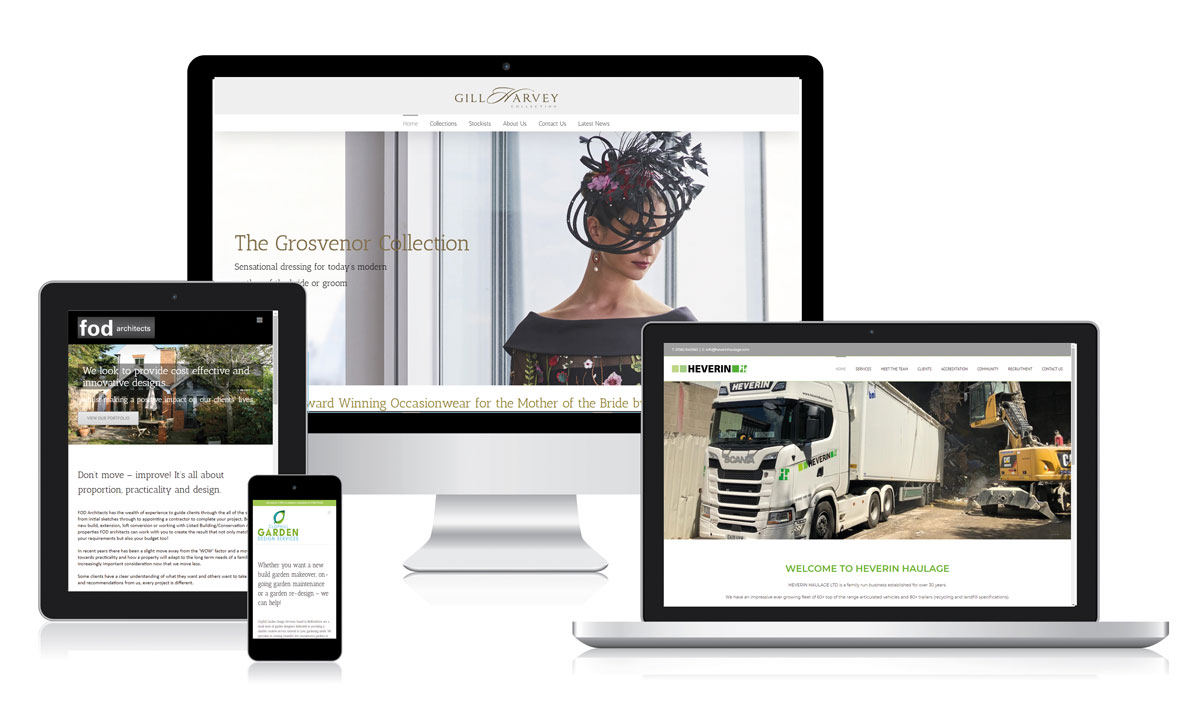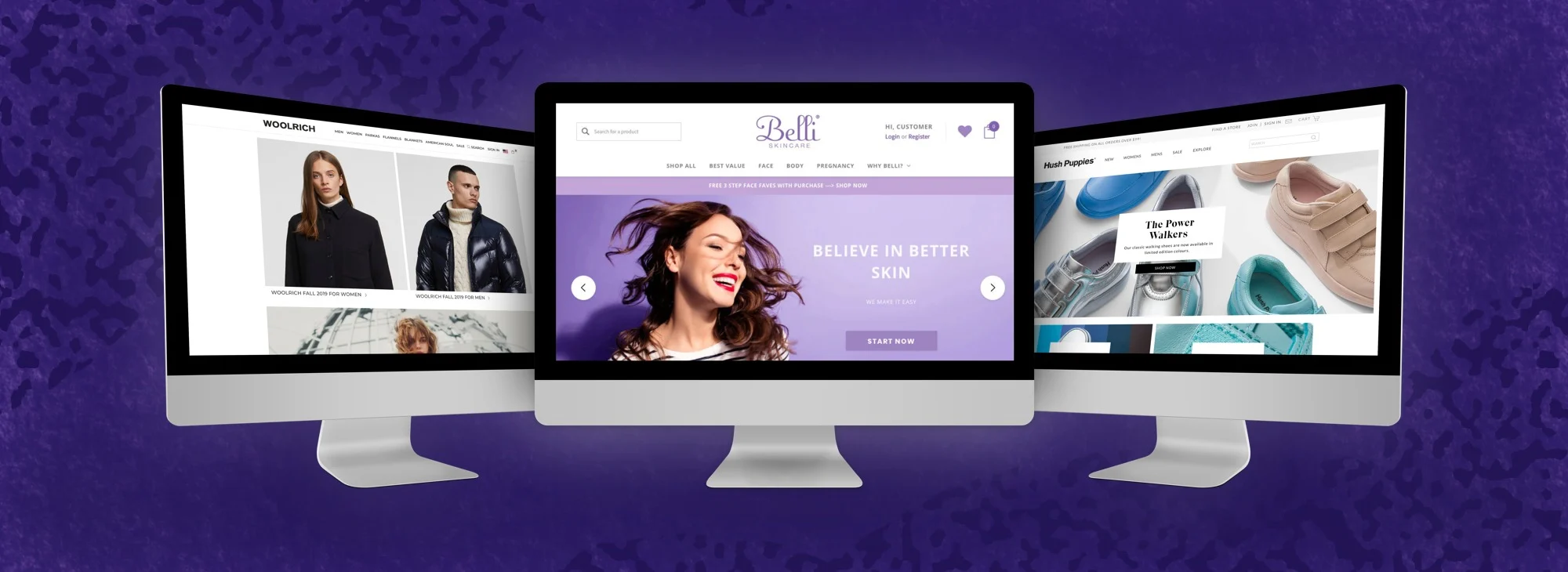How to Optimize Your Website Design for Better User Engagement and Retention
How to Optimize Your Website Design for Better User Engagement and Retention
Blog Article
The Ultimate Overview to Modern Website Style Trends
In the ever-evolving digital landscape, modern-day web site design trends play an important function fit user experience and involvement. From the rise of minimal style concepts that prioritize simpleness to the influence of bold typography in defining brand identification, each element adds to a natural on-line existence. The focus on mobile-first and receptive methods, along with cutting-edge microinteractions, further improves functionality. Furthermore, the expanding focus on sustainable internet design methods mirrors a dedication to ecological duty. These fads jointly elevate crucial concerns concerning the future of reliable website design and what it means for consumers and companies alike.
Minimalist Layout Principles
Minimal design concepts highlight the idea that less is more, advocating for simpleness and functionality in aesthetic communication. This approach strips away unnecessary components, focusing instead on crucial components that convey the designated message efficiently. By prioritizing clarity, minimalist style improves individual experience, allowing site visitors to browse sites easily.
Core tenets of minimalist style include the usage of sufficient white space, which produces a feeling of equilibrium and company. This adverse area not only routes the audience's attention to essential elements yet likewise promotes a soothing aesthetic environment. Furthermore, a limited color palette is usually employed, utilizing soft shades or monochromatic schemes to maintain aesthetic communication and protect against overwhelming the customer.
Typography plays an essential function in minimal layout, where legible typefaces are picked for their simpleness and efficiency in interacting content. Graphics and pictures are conserved, guaranteeing that they offer an objective as opposed to distract from the total message. Inevitably, minimalist design principles grow a focused setting that encourages customers to engage with the web content, boosting the general effectiveness of modern-day web site design. This fad shows an expanding recognition for thoughtful, user-centric appearances in electronic spaces.
Bold Typography Options
Welcoming strong typography selections has become a specifying characteristic of modern web site design, as it efficiently records attention and shares strong messaging. Developers are progressively utilizing typography not merely as a functional aspect yet as a crucial aesthetic component that boosts the overall aesthetic and customer experience.

Furthermore, the juxtaposition of vibrant typography with minimalist layout principles permits for striking contrasts, improving readability while maintaining visual allure. Making use of whitespace around bold text further emphasizes its importance, making sure that the message resonates with the audience.
As electronic landscapes end up being a lot more competitive, leveraging vibrant typography makes it possible for brands to separate themselves and leave a long-term impact. The mindful selection of typefaces and their application can stimulate feelings, develop tone, and drive action, making bold typography an essential device in contemporary site layout. Eventually, it is an effective means to improve storytelling and ensure that vital messages are not only seen however additionally really felt.
Mobile-first and responsive Design
Mobile-first and responsive layout has arised as a vital principle in contemporary website advancement, mirroring the enhancing dependence on mobile phones for accessing on-line content. As individual actions changes towards mobile browsing, developers have to prioritize producing experiences that adjust flawlessly across different display dimensions and resolutions.
A receptive design makes sure that a web site automatically adjusts its design, images, and Visit This Link capability based on the device being made use of. Mobile-first design supporters for establishing websites originally for smaller displays, subsequently scaling up to larger display screens.
Carrying out mobile-first and receptive principles not just accommodates individual preferences but additionally lines up with seo (SEO) techniques. Major internet search engine, like Google, prioritize mobile-friendly web sites in their positions, making it critical for companies to adopt these design strategies. In a competitive digital landscape, welcoming mobile-first and responsive layout is not simply an alternative; it is vital for ensuring ease of access and engagement with a varied audience.
Engaging Microinteractions
Microinteractions play a crucial duty in enhancing customer interaction and total website experience, specifically in the context of receptive and mobile-first design. These subtle design aspects offer instant responses to users, making communications extra intuitive and enjoyable. Examples consist of switch animations, alert alerts, and packing signs, which not only guide individuals but also produce a feeling of link with the interface.
Incorporating engaging microinteractions can considerably improve use by lowering cognitive lots. When individuals get acoustic or aesthetic responses upon carrying out actions, such as clicking a button or sending a kind, they really feel a lot more confident in their selections. This fosters a smoother navigation experience, eventually increasing customer retention.

As site design patterns remain to develop, the relevance of microinteractions can not be overstated. They act as the subtle yet effective touchpoints that change common interactions into amazing experiences, therefore elevating the total performance of contemporary internet style.
Sustainable Website Design Practices
Sustainable website design methods are ending up being progressively essential as the digital landscape expands and ecological problems rise. Designers and designers are identifying their responsibility to create websites that not just offer individual requirements but also lessen environmental effect. This method encompasses numerous vital approaches.
First of all, optimizing power intake is paramount. Web sites must be designed to pack swiftly and effectively, which lowers server energy use and enhances customer experience. Strategies such as picture compression, lessening HTTP demands, and making use of modern coding methods contribute considerably to this objective.
Second of all, picking eco-friendly organizing carriers is critical - website design. Lots of hosting companies are currently powered by eco-friendly energy resources, allowing websites to run in a more lasting fashion. This selection reflects a commitment to lowering carbon impacts
Additionally, taking on a minimalist layout can enhance sustainability. Fewer components on a page cause less information transfer, which not only accelerates loading times yet additionally conserves sources.
Lastly, promoting electronic ease of access makes sure that sites get to a broader target market without unnecessary bloat, lining up user experience with ecological obligation. By incorporating these lasting practices, internet developers can add positively to both individual interaction and the earth's well-being.
Final Thought
In summary, modern website design patterns stress the assimilation of minimal concepts, bold typography, and receptive style to improve customer experience. Engaging microinteractions add to memorable interactions, while sustainable techniques support for ecologically conscious advancement. Jointly, these components not only raise visual allure however additionally boost functionality, continue reading this ensuring that sites are both visually striking and user-friendly. Taking on these patterns is important for creating impactful digital experiences that reverberate with customers in a significantly affordable online landscape.
In the ever-evolving electronic landscape, modern website layout trends play a crucial duty in forming individual experience and involvement. By focusing on clearness, minimal layout boosts individual experience, permitting site visitors to navigate sites easily.
Ultimately, minimal layout principles grow a focused environment that encourages customers to engage with the web content, boosting the general performance of contemporary web site design.Microinteractions play a crucial duty in boosting user engagement and total website experience, specifically in the context of mobile-first and responsive style.In recap, modern internet site style fads highlight the combination of minimal principles, bold typography, and responsive style to boost customer experience.
Report this page